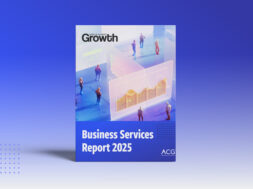How to Avoid Currency Risk When Investing Abroad
Sean Coakley of Cambridge Global Payments describes how to address foreign exchange risk during cross-border deals.

This Q&A is sponsored by Cambridge Global Payments.
This story originally appeared in the Spring 2021 print edition of the Middle Market Growth Awards Special Report. Read the full report in the archive.
 Sean Coakley
Sean Coakley
Title: National Account Manager and Market Strategist
Company: Cambridge Global Payments
Expertise: Based in Vancouver, British Columbia, Sean Coakley is national account manager and market strategist for Cambridge Global Payments, where he helps North American corporates and institutions deploy FX risk management, treasury and payment solutions.
What is your outlook for cross-border deal volume in 2021?
Since 2018 and especially true in 2020, the trend has been toward a lower level of cross-border deal flow both in number of transactions and dollar value. Starting in the second half of 2021, I expect this trend to begin to reverse.
For several years, the United States has dominated inbound and outbound deal flow and should maintain its preeminent spot in both categories. Fiscal largesse, reopening of businesses and a substantially diminished U.S. dollar make the United States an especially compelling target for inbound investment.
In fact, the U.S. is expected to significantly outpace other developed market economies, recording year-over-year GDP growth of 6.5%. This will provide a substantial tailwind.
What are some of the foreign exchange (FX) considerations that deal-makers should consider when investing or expanding abroad?
Investing abroad introduces complexity both at the deal and portfolio company level that can have a material impact on investment returns. The challenges presented and their potential solutions vary depending on where the FX exposure originates.
At the deal level, FX markets trade continuously such that their variation can significantly impact acquisition costs and ultimately IRR. This exposure is present throughout the deal process but can largely be managed in due diligence. Where we find acute challenges is during execution, especially if there are earn-out provisions in a foreign currency post-close.
The portfolio company level is where we find the largest ongoing challenges. FX variations can have a very material impact on cash flow volatility, operating margins and working capital management. These have downstream impacts on long-term profitability, growth and valuation that can be substantial. Additionally, capital structure choices and sources of financing add additional challenges, as translational FX exposures have been known to trigger covenant breaches.
How can technology mitigate currency risk?
Within the U.S. market, there is a wide variation in the quality of international banking capabilities and offerings. Often the solutions needed to address challenges emanating from cross-border activities are unavailable, difficult to access or expensive. Financial technology has been a great equalizer in terms of granting access to hedging, cash management and disbursement tools while also driving down their costs.


